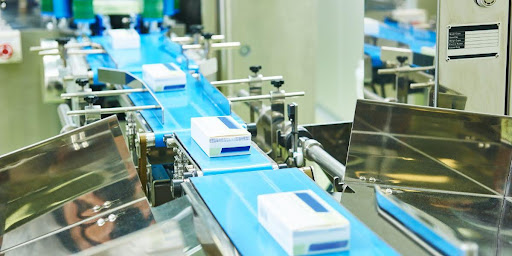The Pharmaceutical Industry can be regarded as one of the most important and growing industries in the economy. This industry aims to invent and provide efficient remedies and therapies to global patients, making their development dynamic.
However, there is one certain feature, which does not escape the attention of a consumer, but is rather essential in the field of pharmaceutics – it is the packaging. Sealing represents a critical aspect of the effectiveness of the drugs, and their protection from the external environment and is a valuable segment of pharmaceutical distribution networks.
Types of Pharmaceutical Packaging
Pharmaceutical packaging can be broadly categorized into three types: Some of them are; primary packaging, secondary packaging, and tertiary packaging. All of them are very useful and serve to accomplish a certain purpose within the sphere of packing.
Primary Packaging
Primary packaging involves the materials that enclose the medication and are in direct contact with the latter. These include blister packs, bottles, vials, and syringes. The primary packing specifically aids in preventing the drug from factors including moisture and light and protects it from any form of contamination to give it a stable shelf life.
Further, the accessibility of primary packs could also be defined in terms of ease of handling, especially for patients using the pack to take his or her medicine.

Secondary Packaging
Secondary packing relates to other forms of packaging that surround the primary packaging, this includes; cartons and labels. This packaging increases protection and is vital for branding and other information-giving processes.
For instance, the label of a pharmaceutical product should bear information such as dosage advice, date of expiry, and batch numbers. Within this regard, high-speed labeling is especially significant when it comes to labeling numerous vials that are required by the market.
Tertiary Packaging
In this kind of packaging, the main objectives include the packaging of pharmaceutical products for storage and transportation in tertiary packs.
This consists of the boxes used in shipping as well as the pallets and other packaging goods intended to offer security to the products during the shipment process. Tertiary packaging guarantees that the medications arrive in their proper form without being harmful by the physical impacts and unfriendly conditions.
Material Preferences
The kinds of materials that must be used in the packaging of pharmaceuticals depend on factors such as; the type of drug that is being packed, legal requirements, and environmental conditions.
Here’s a comparison of some key materials used in pharmaceutical packaging:
Plastics
Some of the commonly used plastics include PET and HDPE because they are versatile and cheaper to use in the packaging of drugs. These are nonviolent and do not break easily and afford a good measure of protection against moisture and oxygen. Indeed, the environmental effects of these materials are increasingly raising concern thus the calls for more eco-friendly materials such as plastics.
Glass
Glass is used intensely in packing sensitive medicines because it is chemically inactive and offers a great barrier. It does not interact with the contents resulting in the preservation of the purity and stability of the medicine.
Glass is also totally non-porous to gasses and moisture therefore its suitability in packing sterile products such as injectable drugs and biologics. But glass is delicate and also weightier than other materials and is usually a problem when transporting.
Aluminum
Aluminum is frequently in packaging substances that have to be protected from light and moisture including blister packs and tubes. As a result, it serves as protection for the medicine from its surrounding environment and retains the potency of the drug.
On top of that, the used aluminum is very much recyclable in nature which helps in protecting the environment. Nonetheless, aluminum packaging has the potential to be costly as compared to other kinds of packaging.
Paper and Paperboard
Paper and paperboard are widely used in secondary and tertiary packaging since they are sustainable and printable. These materials are recyclable and a lot of product details and branding can be put on it plus it is affordable. Yet they are not as protective as plastics and metals and are usually incorporated with other materials to improve on their protective features.
Technological Advancements
The market size of the pharmaceutical packaging industry has increased tremendously over the years with technology being a key driver.
Smart Packaging
Smart packaging then includes RFIDs and QR codes that increase the Pharmaceutical products’ security and tracking. This technology helps in tracking the supply chain and counter-check brands to help in the prohibition of counterfeit and ensure that medications get to the intended patients.
Anti-Counterfeiting Measures
The Pharmaceutical business is widely affected by counterfeiting; fake medicine is a threat to the health of people. To this effect, packaging solutions are being adapted with a higher degree of security elements like holograms, seal indicators, and serialization. These measures assist in authenticating the product to eliminate counterfeit items that endanger the lives of patients through fake drugs.
Sustainable Packaging Solutions
The current trend of society shows that today’s consumers are environmentally conscious, which places them in a new direction when choosing packaging materials, and the industry is not an exception.
This has the implications of calling the Sources of Raw Materials biodegradable materials, reducing the usage of packaging material, and safeguarding the environment through the provision of environment-saving aspects of manufacturing. It helps reduce the stakes on the environment concerning packaging and it is also proactive in regards to the customers with conscience.
Regulatory Influences
Medication packaging is strictly controlled for the sake of protecting the product and providing the best packaging solutions. There are numerous packaging regulations which are basically about; packaging safety and quality, packaging labels, and packaging environmental control.
Safety and Quality Standards
Currently, pharmaceutical packaging has to meet the requirements of the national regulatory agencies added to the global ones such as the FDA and EMA. These requirements make sure that there will be no interference with the medication by the type of materials used for the packaging and at the same time, the packaging process will not compromise the quality of the product.
Labeling Requirements
Labeling is a critical component of pharmaceutical packaging, serving as the primary source of information for healthcare professionals and patients.
The importance of accurate and comprehensive labeling cannot be overstated, as it directly impacts patient safety and regulatory compliance. Key aspects of pharmaceutical labeling include: drug names, dosage, ingredients, manufacturer details, batch numbers, expiry dates, and usage instructions. It adheres to regulatory guidelines such as FDA and EMA, addressing country-specific and multilingual requirements.
Readability is ensured through appropriate font sizes, pictograms, and Braille for accessibility. Specialized features include temperature indicators, anti-tampering seals, and QR codes.

The implementation of these labeling requirements often necessitates sophisticated
technologies, such as pharmaceutical high-speed vial labeling systems. These systems ensure that even in high-volume production environments, each package receives accurate, securely affixed, and legible labels.
Environmental Regulations
Environmental standards are gradually rising as a significant factor that influences the development of pharmaceuticals, primarily concerning the minimization of packaging waste and
the implementation of recycling programs. It encourages companies to incorporate environmentally friendly materials in their products and adopt responsible packaging.
Conclusion
A vital sector as the pharmaceutical is with high demand and constant changes in the packaging needs. This paper takes a look at different aspects that affect the functionality of a pharmaceutical company along the supply chain: Choosing the appropriate material and embracing innovative technologies are what the companies need to do to be on the safe side of producing and bringing to the market quality and sustainable products. Looking to the future, incorporating these aspects into the operation of the industry will be crucial to retaining confidence with key stakeholders – physicians and the population.








